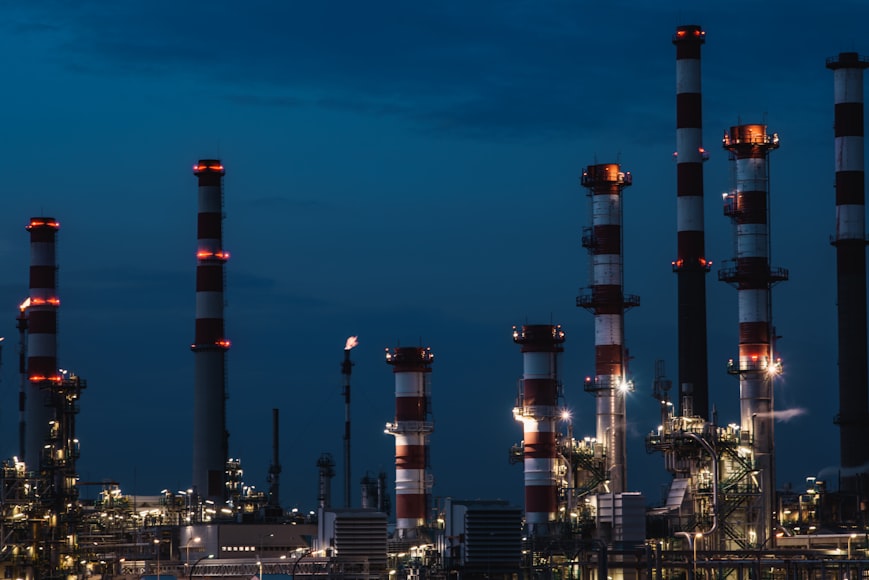Oil and gas pipelines are expensive, important, and significant infrastructural components for any country or state because they are considered one of the safest and most cost-effective ways to transport various petroleum products. However, pipeline leakages or malfunctioning can result in widespread environmental damage, economic loss, and chaos to the entire ecosystem.
Therefore, it is necessary for operators to identify, control, and eliminate any risk of accident or pipeline damage to ensure continuity in operations. Piping systems in the O&G industry are complicated structures that require a robust understanding of the entire operations, equipment in question, and the environment to create robust risk management processes and procedures.
Let’s look at some management programs and procedures that help identify risks and other harmful factors involved in the Piping systems in the O&G industry.

Quantitative Risk Management
Quantitative risk management is a widely used risk management program for piping systems in the O&G industry that ensures the safety, security, and swiftness of oil and gas pipeline operations. This process is essential in determining the causes and operational effects of various hazards.
The process can either be reactive or proactive, depending on the management’s stance on operational risk. However, it is essential to note that risks evolve and change in frequency with time. This necessitates the implementation of a flexible quantitative risk management policy involving ongoing monitoring.
The quantitative risk management process also involves identifying, regulating, and mitigating the consequences of unpredictability and the likelihood of unpredictable events. This risk management process is divided into four different processes:
- Risk Identification
- Risk Evaluation
- Risk Analysis
- Risk Mitigation

Causes of Accidents in Piping systems in the O&G industry
Oil and gas pipeline accidents occur due to various reasons. Some of the most common causes of these failures, accidents, or leaks include:
- Pipeline corrosion
- Mechanical failure
- Damage due to land excavation
- Natural hazards
- Undetected leaks
It is important to conduct a robust risk assessment before constructing and installing these pipelines to minimize any risks during their operation. As a result, risk assessment studies have become common among pipeline operators and businesses involved in the oil & gas industry. The QRM approach, in particular, has significantly improved the safety and security of piping systems in the O&G industry.

Common Elements in a Pipeline Safety Program
At the basic level, pipeline safety management and safety programs are not very different from those used in other industries, notably the construction and infrastructure management industries. Some of the program elements are very similar, such as:
- The overall safety policy
- Contractor management
- Hazard assessment procedures and process
- Hazard control and management
- Inspections and preventive maintenance procedures
- Emergency response plans
- Worker safety and training.
There’s a common perception that transporting hazardous substances through oil and gas pipelines is much safer than using tanker trucks. However, these pipelines are prone to aging and can accumulate significant damage over time, leading to burst pipes and leakages.
Massive pipeline infrastructure calls for robust weakness assessment processes. Rigorous preventative maintenance can help avoid failures. However, this requires quality materials, pipes, and experienced personnel who know the ins and outs of pipeline maintenance.
Quality Pipelines and Material Safety
There’s no denying that we are about to witness a rapid rise in demand for oil and gas products across the globe. Estimates reveal the demand is likely to increase by an average of 2.1% annually, with oil accounting for 37.6% of the global energy mix by 2030. Likewise, the share of gas is expected to increase by 28%, up from the 22% current demand.
All this requires quality pipelines and premium materials used in piping systems in the O&G industry. Developing nations, in particular, rely heavily on oil and gas as sources of energy for their economic and social development.
This is where companies such as CNPS have stepped up to provide the oil and gas sector with quality solutions such as geological field supplies, glass-reinforced piping systems, and mud logging units. Our goal is to help companies in the oil & gas industry with high-quality mud logging, enhanced oil refinery, OCTG, oil mining, production, and cementing solutions.
Get Started with CNPS
At CNPS, we believe in providing companies with world-class products that work well in harsh conditions and are robust enough to withstand high-pressure environments. CNPS offers a range of composite pipes, such as GRE, GRP, RTP, and FRP piping systems, to prolong the lifespan and improve efficiency and yields.
We’ve got a range of solutions to ensure the safe, secure, and swift transportation of fuels and natural gases along pipelines. You can set up a consultation with experts at CNPS to streamline the most suitable choice for mud logging solutions or geological supplies to achieve compliance, optimal performance, and safety standards for your operations. Alternatively, our representatives are also easily reachable via a quick call.


